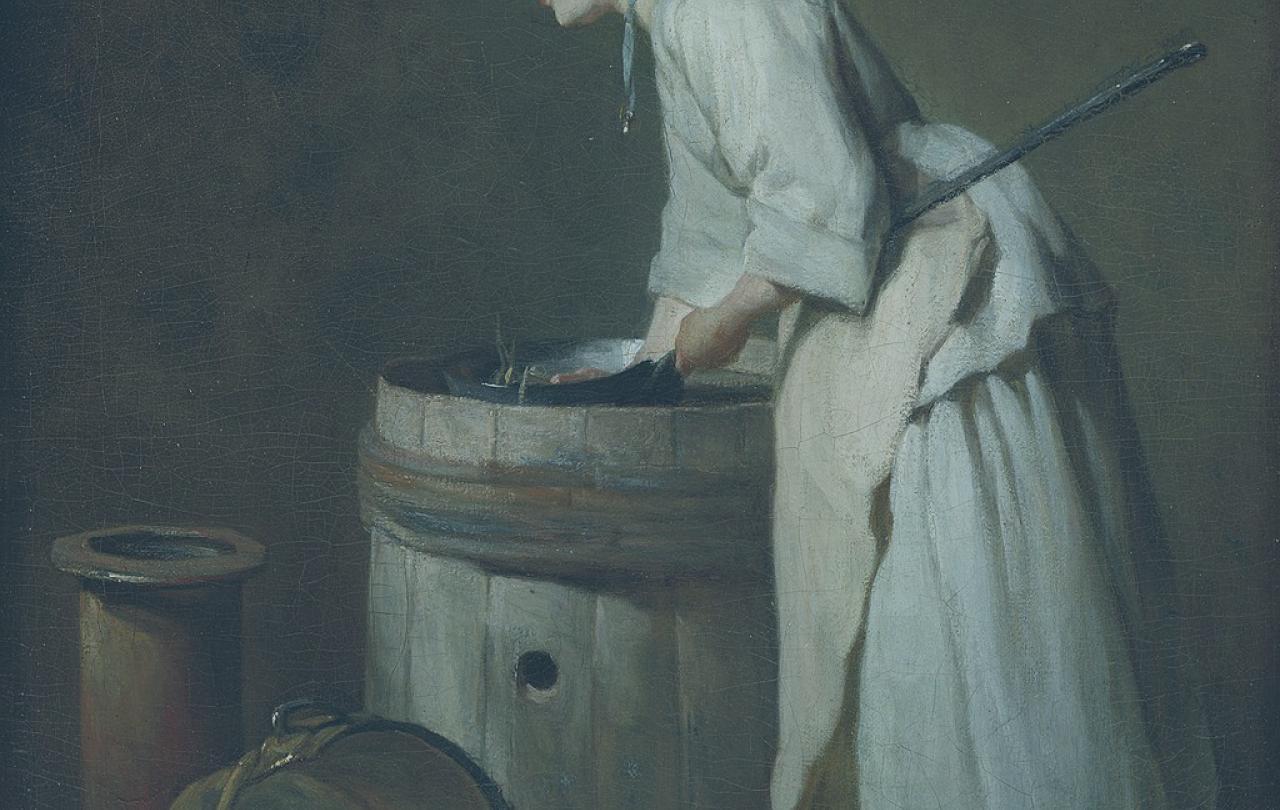For Hunter, understanding what is going on in a culture requires diving deep into the sources it draws on. What forms it? What drives it? All too easily we focus on the observable and what we can see. The stuff that happens and the values, beliefs and institutions that comprise our common life.
But that is to miss the deeper structures of culture that are formed by our tacit assumptions and the latent frameworks of meaning that nestle unseen and form the cultural architecture that surrounds us. The power of culture is demonstrated by how far it is taken for granted’.
In an interview Hunter likened his approach to be the difference between weather forecasts and climate studies. Or, to put it another way, moving from ‘the politics of culture’ to ‘the culture of politics.’
Beginning at the beginning, Hunter goes to the origin story of the nation. Deeply influenced by the principles of the enlightenment the Founding Fathers of the United States set about their task of nation building. Proposed by John Adams, Benjamin Franklin and Thomas Jefferson in 1776, the national motto on the Great Seal of the United States, E Pluribus Unum (Out of many, one), summed up their political objective. The creation of solidarity. The glue that binds a society together.
The genius of the Enlightenment in America was that it facilitated this solidarity. What was created was a ‘Hybrid-Enlightenment’, fusing the insights of French and British intellectuals in a context deeply influenced by the faith of religious dissenters, with the Puritans chief among them. The blending of the secular and faith insights from the Enlightenment was what provided its robust inclusivity and durability. For Hunter, this proved key because:
“In the end, the hybrid-Enlightenment in America was a broad enough and opaque enough amalgamation to encompass substantial diversity and the tensions that diversity implied.”
This opacity enabled different groups to see themselves in the enterprise and gave wider American society an ability to absorb a plurality of views, opinions, and traditions. A commitment to Enlightenment rationality also then provided the tools whereby differences could be ‘worked through’ in reasoned debate. Thus, the culture was a living thing, growing, evolving and developing. All the time maintaining the wider solidarity, the ‘buy-in’ from the different communities and constituencies that comprise America.
Opacity also meant that tensions and contradictions were part and parcel of the endeavour from the start. There may have been a promise of freedom, equality and universal justice for all, yet historically these have been denied to large tracts of the American population. But still the centre held, and solidarity was maintained. As Abraham Lincoln presciently reflected in his Second Inaugural Address, given on March 4 1865, shortly before his assassination and the end of the Civil War:
“[We] read the same Bible and pray to the same God, and each invokes His aid against the other. … [Yet] the prayers of both could not be answered—that of neither has been answered fully.”
The problem today, as Hunter discerns it, is that the elements of the hybrid-Enlightenment are unravelling. He sees a number of contributory causes to this escalating collapse.
Right at the centre is an amoral, materialistic and individualistic neoliberalism which reduces everything to economics and the market. This is deeply corrosive of community and solidarity.
Then there is the fruit of postmodern scepticism that has filtered down from the intellectuals into the general population. Truth is deconstructed, experts are distrusted and misinformation, disinformation and fake news abound.
Widespread immigration also plays a part. It intensifies American pluralism and brings into the country those who are unfamiliar with the legacy of the hybrid-Enlightenment and for whom the national mythos of America is either strange or incomprehensible. Far from being taken for granted, their worldview does not fit.
The growth of identity politics further complicates the unravelling. Solidarity, rather than being found in the national vision, is achieved by defining ‘us’ over and against ‘them’. It doesn’t foster cohesion, it seeds division. Grievance and hurt issue in rage, the unchallengeable moral authority of ‘my personal experience!’ As with Nietzsche, this acts as a narcotic against the hurt, an anaesthetic for the pain.
Of course, identity politics has no room for reasoned debate and mutual resolution. All that matters is the outcome of the zero-sum game where the justice of my position is both acknowledged and acted upon, and you lose. Whether that identity falls on the political right or left, it doesn’t matter. Family, sexuality, public education, the news media, the arts, the law, electoral politics, you name the issue the game play is the same.
Solidarity always involves drawing boundaries. Even the hybrid-Enlightenment drew the line between what was acceptable and what was unacceptable. Who was a part of us, and who was not. Without boundaries there is no identity. It is just that now, identity politics require the boundaries to be much more tightly drawn. “What kind of American are you?”
In all of this, America’s cultural resources for ‘working through’ these issues have been seriously depleted as the hybrid-Enlightenment has unravelled. Into the void, observes Hunter, a form of cultural nihilism slips in. It is far from being all-pervasive, and he maintains that few Americans are nihilists. Yet as a cultural reality he sees it in the prevailing tendencies towards ‘epistemological failure’, ‘ethical incoherence’ and ‘existential despair’. Then, deriving from these he adds a fourth, ‘political annihilation’ and the will to obliterate everything that obstructs acquiring power by destroying enemies completely.
Does it all seem rather depressing?
Hunter admits that he has neither proposals nor a plan to address the crisis he so eloquently describes and accounts for. Yet he concludes:
“… truth be told, I myself am very hopeful – not because I don’t see the seriousness of the problem and its dangerous implications, but because I believe that the times are full of real opportunity if one has the eyes to see them. Sadly, my eyesight is not very good. … [but] without real images of a better world, without myths of a completion of the past in the future, without a world ordered towards goodness, truth, and beauty … We become something like Nietzsche’s ‘last men’.”
I’m grateful to Hunter. I think I understand my American friends, their country and their present challenges better for his insights. As for the possibility of a civil war, he thinks it’s unlikely as the ‘red and blue’ are too intermingled and economically interdependent across the country. In the meantime, political violence will continue to be a very real threat.
As for the future he hopes for, it requires a paradigm shift to imagine and articulate a new vision of public life. It needs the cultural resources of a reconstituted humanism, drawing on the rich insights available in a genuinely pluralist society. Resources that embrace the faith wisdom of exemplars like Martin Luther King, Mohandas Ghandi and Thích Nhất Hạnh. Resources that include a retrieval of the fundamental principle of forgiveness. Without the realism to accept that none of us are perfect, we’ll never be able to live together. As the influential political theorist Hannah Arendt wrote in The Human Condition (1958):
“Without being forgiven, released from the consequences of what we have done, our capacity to act would, as it were, be confined to one single deed from which we could never recover; we would remain the victims of its consequences forever.”
Arendt’s insight is altogether more telling when seen in the light of her experience as a German Jew under the Nazis. And if forgiveness is too high a bar, at the very least we have to somehow learn to let things go and move on.
Hunter is under no illusions, such a paradigm shift remains a long haul away.
But he is hopeful.


